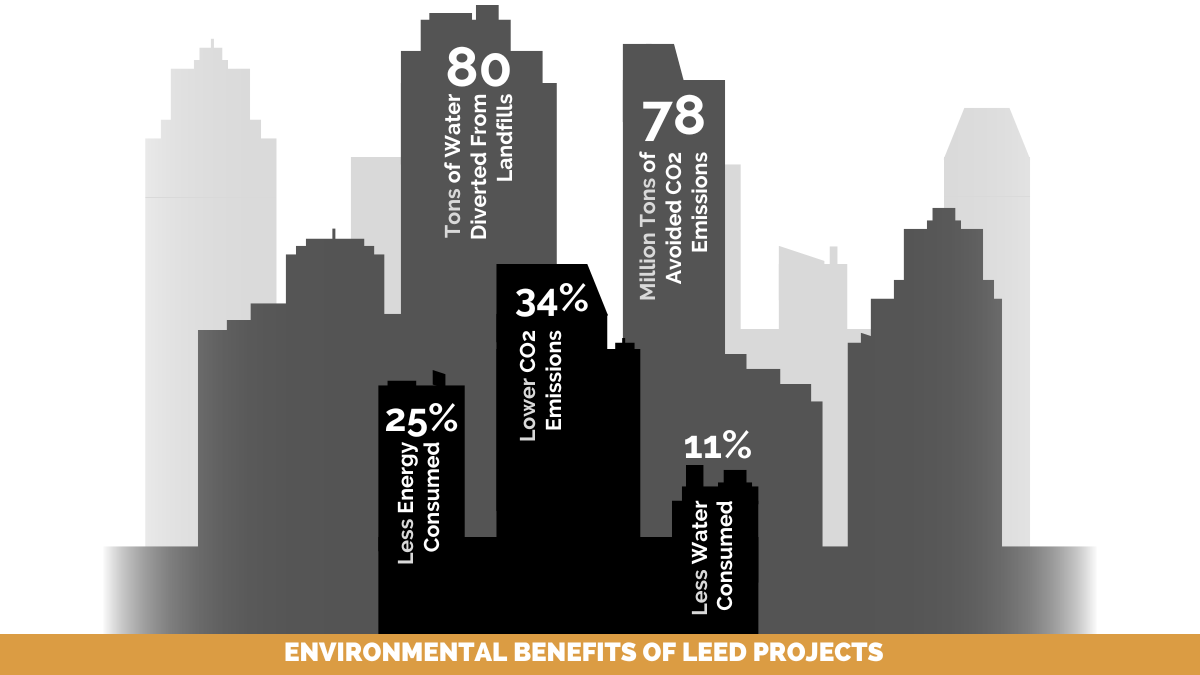Building for Sustainability
Sustainability in construction has become a growing focus in the industry over the past two decades. With the construction industry producing roughly 40 percent of all carbon emissions each year, changes need to be made in order to reduce the impact on the environment.
How do you build sustainable?
Sustainable construction is building with the environment in mind. This includes using renewable, recyclable and ecological resources and materials. Additionally, there is added attention to limiting material waste and energy usage, and taking care of the environment surrounding the jobsite.
Choosing materials to use within a project is a simple way to reduce carbon emissions. For instance, nearly 10 percent of all emissions are released from the cement used to make concrete. Steel has five times more embodied energy than wood, making wood the best option for reducing project materials’ global warming potential.
While there are times that less sustainable materials are necessary, limiting those materials for design purposes is a way to cut down unnecessary resources. With the global use of raw materials expected to double by 2060, choosing more sustainable materials will help minimize overall carbon emissions.
Meyer Najem is currently in the process of building a multi-unit complex in Jacksonville, Florida. The site of this project is located up against a natural wetland. In order to protect the environment around the site, a lot of thought went into choosing which fencing materials would be used to surround the project, as well as how runoff water was routed.
Typically, best management practices include silt fence, inlet bags or a turbidity fence. For this project, the team decided to use a turbidity fence against the wetlands due to its reinforced PVC plastic that works a step above silt fences to stop the runoff water from causing any harm to the surrounding area. Additionally, due to a steep bank, covering the sand in visqueen stops erosion entirely. With great consideration, these protective initiatives helped ensure that Meyer Najem limited its overall impact on the natural environments surrounding the jobsite.
The primary resistance to sustainable change is cost. Within a world of long lead times and rising material cost, choosing sustainable materials is not always the most ideal financial option. In order to battle the cost of sustainable construction, it is important to focus on the long-term benefits of building green.
Financially, the upfront costs, on average, are 2 percent more than conventional construction. These materials have become more valuable and can sustain themselves longer. The larger factor to consider is the savings over time.
Typically, a green building will use around 30 percent less energy than conventionally standard buildings. Over a green building’s lifetime, it will eventually pay for itself (some quicker than others, depending on the material). After five years, nearly half of all green buildings will begin to see the return of their initial investment due to savings in water usage, energy consumption, maintenance or everyday operations.
Thinking toward the future, our efforts on sustainability have a great impact on our environment’s future. At Meyer Najem, we want to consider green building opportunities not only for the environment, but also for our clients’ long-term advantages.
Creating Healthier Environments
Being LEED certified helps identify how environmentally friendly and sustainable a building is, taking into account water and energy efficiency, CO2 emissions reduction, as well as indoor environmental quality. LEED certified buildings cost less to operate, improving things such as energy efficiency and water efficiency greatly reduce the monthly utility bills.
To achieve LEED certification, a project earns points by adhering to certain requirements that address carbon, energy, water, waste, transportation, materials, health and indoor environmental quality. Projects go through a review process Green Business Certification Inc. (GBCI) and are awarded points that correspond to a specific level of LEED certification: Certified, Silver, Gold, and Platinum.
LEED Projects Constructed
Meyer Najem has constructed more than 90 LEED projects across the healthcare, commercial, educational, municipal, senior living and multi-family markets.


